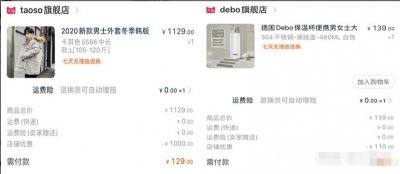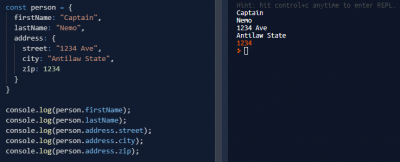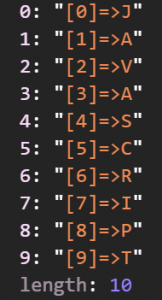使用 Data Binding 也有半年多了,从最初的 setVariable,替换 findViewById,到比较高级的双向绑定,自定义 Adapter、Component,查看源码了解编译、运行流程,也算是小有成果,且没有碰到 Data Binding 本身实现上的问题。
然而,最近在一次重构组件化(见 MDCC 上冯森林的《回归初心,从容器化到组件化》)的过程中,碰到了一个比较严重的 BUG。已经提交 issue(#224048)到了 AOSP,虽然改起来是不麻烦,但是因为是 gradle plugin,所以 - -,还是让 Google 自己来吧。希望能早日修复。
Library module 生成 class
在 library module 下启用 Data Binding 很简单,跟 application module 一样,加上:
1 2 3 4 5 |
android { dataBinding { enabled = true } } |
对应生成的 binding 类会在 manifest 里面指定的 package name 下的 databinding 包下。
坑
于是坑的地方就在这里了,编译不过了…
为啥呢?报错说 symbol 找不到…于是在 module 的 build 下查看生成的 Binding 类…卧槽?!怎么是 abstract 的?怎么都找不到那些 get 方法了?虽然我也不知道为什么我们会从 binding 类里面去拿之前 set 进去的 ViewModel。
WTF?!
What happened
Fuck 归 fuck,究竟怎么回事还是要研究一下的。
是我们姿势错了?Dagger2 生成哪里出问题了?还是 Data Binding 的 bug 呢?
因为之前也研究过 data binding 生成部分的代码,所以找到问题所在没有花太多时间,这里不多啰嗦,直接看对应位置。
在 CompilerChief 的 writeViewBinderInterfaces 中:
1 2 3 4 |
public void (boolean isLibrary) { ensureDataBinder(); mDataBinder.writerBaseClasses(isLibrary); } |
对应 DataBinder:
1 2 3 4 5 6 7 8 9 10 11 12 13 14 15 16 17 18 19 20 21 22 |
public void (boolean isLibrary) { for (LayoutBinder layoutBinder : mLayoutBinders) { try { Scope.enter(layoutBinder); if (isLibrary || layoutBinder.hasVariations()) { String className = layoutBinder.getClassName(); String canonicalName = layoutBinder.getPackage() + "." + className; if (mWrittenClasses.contains(canonicalName)) { continue; } L.d("writing data binder base %s", canonicalName); mFileWriter.writeToFile(canonicalName, layoutBinder.writeViewBinderBaseClass(isLibrary)); mWrittenClasses.add(canonicalName); } } catch (ScopedException ex){ Scope.defer(ex); } finally { Scope.exit(); } } } |
这里调用了 LayoutBinder(真正的实现类会调用 writeViewBinder):
1 2 3 4 |
public String (boolean forLibrary) { ensureWriter(); return mWriter.writeBaseClass(forLibrary); } |
可以看到如果是 library module,我们会做特殊的编译,而不会生成真正的实现:
1 2 3 4 5 6 7 8 9 10 11 12 13 14 15 16 17 18 19 20 21 22 23 24 25 26 27 28 29 30 31 32 33 34 35 36 37 38 39 40 41 42 43 44 45 46 47 48 49 50 51 52 53 54 55 56 57 58 59 60 61 62 63 64 65 66 67 68 69 70 71 72 73 |
public fun writeBaseClass(forLibrary : Boolean) : String = kcode("package ${layoutBinder.`package`};") { Scope.reset() nl("import android.databinding.Bindable;") nl("import android.databinding.DataBindingUtil;") nl("import android.databinding.ViewDataBinding;") nl("public abstract class $baseClassName extends ViewDataBinding {") layoutBinder.sortedTargets.filter{it.id != null}.forEach { tab("public final ${it.interfaceClass} ${it.fieldName};") } nl("") tab("protected $baseClassName(android.databinding.DataBindingComponent bindingComponent, android.view.View root_, int localFieldCount") { layoutBinder.sortedTargets.filter{it.id != null}.forEach { tab(", ${it.interfaceClass} ${it.constructorParamName}") } } tab(") {") { tab("super(bindingComponent, root_, localFieldCount);") layoutBinder.sortedTargets.filter{it.id != null}.forEach { tab("this.${it.fieldName} = ${it.constructorParamName};") } } tab("}") nl("") variables.forEach { if (it.userDefinedType != null) { val type = ModelAnalyzer.getInstance().applyImports(it.userDefinedType, model.imports) tab("public abstract void ${it.setterName}($type ${it.readableName});") } } tab("public static $baseClassName inflate(android.view.LayoutInflater inflater, android.view.ViewGroup root, boolean attachToRoot) {") { tab("return inflate(inflater, root, attachToRoot, android.databinding.DataBindingUtil.getDefaultComponent());") } tab("}") tab("public static $baseClassName inflate(android.view.LayoutInflater inflater) {") { tab("return inflate(inflater, android.databinding.DataBindingUtil.getDefaultComponent());") } tab("}") tab("public static $baseClassName bind(android.view.View view) {") { if (forLibrary) { tab("return null;") } else { tab("return bind(view, android.databinding.DataBindingUtil.getDefaultComponent());") } } tab("}") tab("public static $baseClassName inflate(android.view.LayoutInflater inflater, android.view.ViewGroup root, boolean attachToRoot, android.databinding.DataBindingComponent bindingComponent) {") { if (forLibrary) { tab("return null;") } else { tab("return DataBindingUtil.<$baseClassName>inflate(inflater, ${layoutBinder.modulePackage}.R.layout.${layoutBinder.layoutname}, root, attachToRoot, bindingComponent);") } } tab("}") tab("public static $baseClassName inflate(android.view.LayoutInflater inflater, android.databinding.DataBindingComponent bindingComponent) {") { if (forLibrary) { tab("return null;") } else { tab("return DataBindingUtil.<$baseClassName>inflate(inflater, ${layoutBinder.modulePackage}.R.layout.${layoutBinder.layoutname}, null, false, bindingComponent);") } } tab("}") tab("public static $baseClassName bind(android.view.View view, android.databinding.DataBindingComponent bindingComponent) {") { if (forLibrary) { tab("return null;") } else { tab("return ($baseClassName)bind(bindingComponent, view, ${layoutBinder.modulePackage}.R.layout.${layoutBinder.layoutname});") } } tab("}") nl("}") }.generate() } |
那么问题来了,这里的这个只是用来使 library module 编译能通过的 abstract class,只生成了所有 variable 的 setter 方法啊,getter 呢?坑爹呢?
看来是 Google 压根没考虑到还需要这个。写 Kotlin 的都少根筋吗?
规避方案
为了让 library module 能编译通过(这样才能在 application module 生成真正的 Binding 实现),只好避免使用 getter 方法,幸而通过之前开发的 DataBindingAdapter 和 lambda presenter 确实能规避使用 getter 去拿 viewmodel。
不管怎么说,希望 Google 能在下个版本修复这个问题。就是 iterator 一下,写个 abstract 接口而已
Data Binding 在 library module 中遇到的大坑解决 转载https://www.codesocang.com/appboke/33918.html
热门源码











